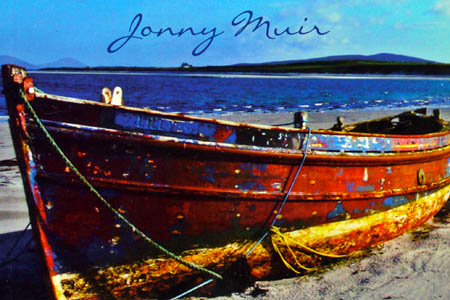In 1773, Samuel Johnson joined his Scots friend James Boswell in a tour of the Hebrides that would produce not one but two accounts of the journey through the Highlands to the islands.
Almost 240 years after the pair set out on their journey of discovery of the wild lands of Scotland, journalist-turned-teacher Jonny Muir made his own island-hopping trip of the magical archipelago and the result is Isles at the Edge of the Sea.
The book is peppered with mentions of the two foregoers but, whereas the two literary Georgian gents confined their island adventures to the nearer Hebrides, Muir’s three month itinerary takes him to 18 islands with the ultimate, one might even say obsessive, aim of reaching St Kilda, the isolated volcanic scraps of land that lie more than 100 miles from the Scottish mainland and which were abandoned by the last 36 residents in 1930.
The curious title of the book – surely all islands are next to the sea? – comes from Norse origin for the Hebrides: Havbredey, meaning the isles at the edge of the sea.
Muir’s tour of the Hebrides is no slovenly amble. He tackles the Goat Fell race on Arran and the race over the Paps of Jura which overlook the isolated house where George Orwell, wracked by tuberculosis, wrote 1984.
For good measure, the Birmingham-born author finishes his Hebridean jaunt by taking part in the Skye half-marathon.
There’s plenty of hillwalking – the high ground draws Muir just as it did in his previous work Heights of Madness in which he visited Britain’s county tops, and he even tops out on the Inaccessible Pinnacle, the most difficult of munros. The ascent, made via the Very Difficult western route, guided by his friend Magnus Houston, is memorable for the non-climber not least for the fact that Houston’s chronic heart problems make him prone to frequent collapse.
And for the seasoned hillbagger, Muir discovers a new set of targets: the MacPhies – Colonsay’s 21 answers to the munros.
Most of the journey through the isles is made solo and, as Muir says: “The joy of travel is in the people one encounters: the crotchety bus drivers; the round the world cyclists; the roomful of snoring strangers; the walker who stood next to me on Conachair; the ceilidh crowd on Eigg; the marshals on the windy summits of the Paps of Jura; the ‘whisky brothers; the Barra tourist who brought me a cup of tea; the English sailors who filled my glass. It is the littlest gestures that live longest in the memory.”
He notes the need to share the wonderment of the places encountered with others, something he misses with his partner hundreds of miles away in London. But the reader fulfils the role vicariously in this work and Isles at the Edge of the Sea conveys in easy style the variety of the magical lands off Scotland’s west coast.
It’s not all plain sailing. Drizzle, mist, whisky hangovers, thunderstorms, gales, a flooded tent and naturally, the enemy of all summer Scotland tourists, the midge, make Muir’s tour eventful, but there’s a sense from the book that the Hebrides reward leisurely exploration.
The author’s easy, journalistic style has a good balance of anecdotes, information, history and, importantly, humour that makes the reading of his tome a pleasure and left me hankering after a trip round the isles myself.
Isles at the Edge of the Sea, paperback, 238 pages, published by Sandstone Press, £8.99.
grough has three copies of the book to give away in our upcoming competition. Keep checking our site for details.

excile9
24 October 2012I read the three sections covering Lewis, Harris and St Kilda and I had to give up. Inaccuracies were peppered throughout and it gave the impression the “diary” format was written from memory. In places it certainly lacked knowledge of the geography and history.